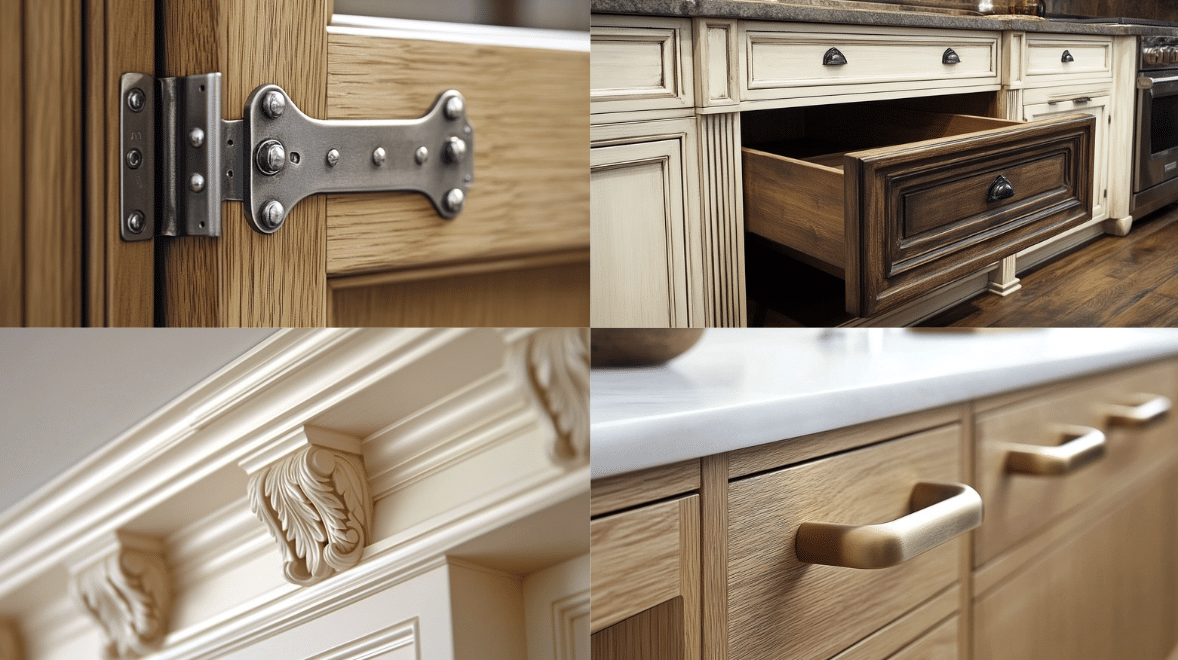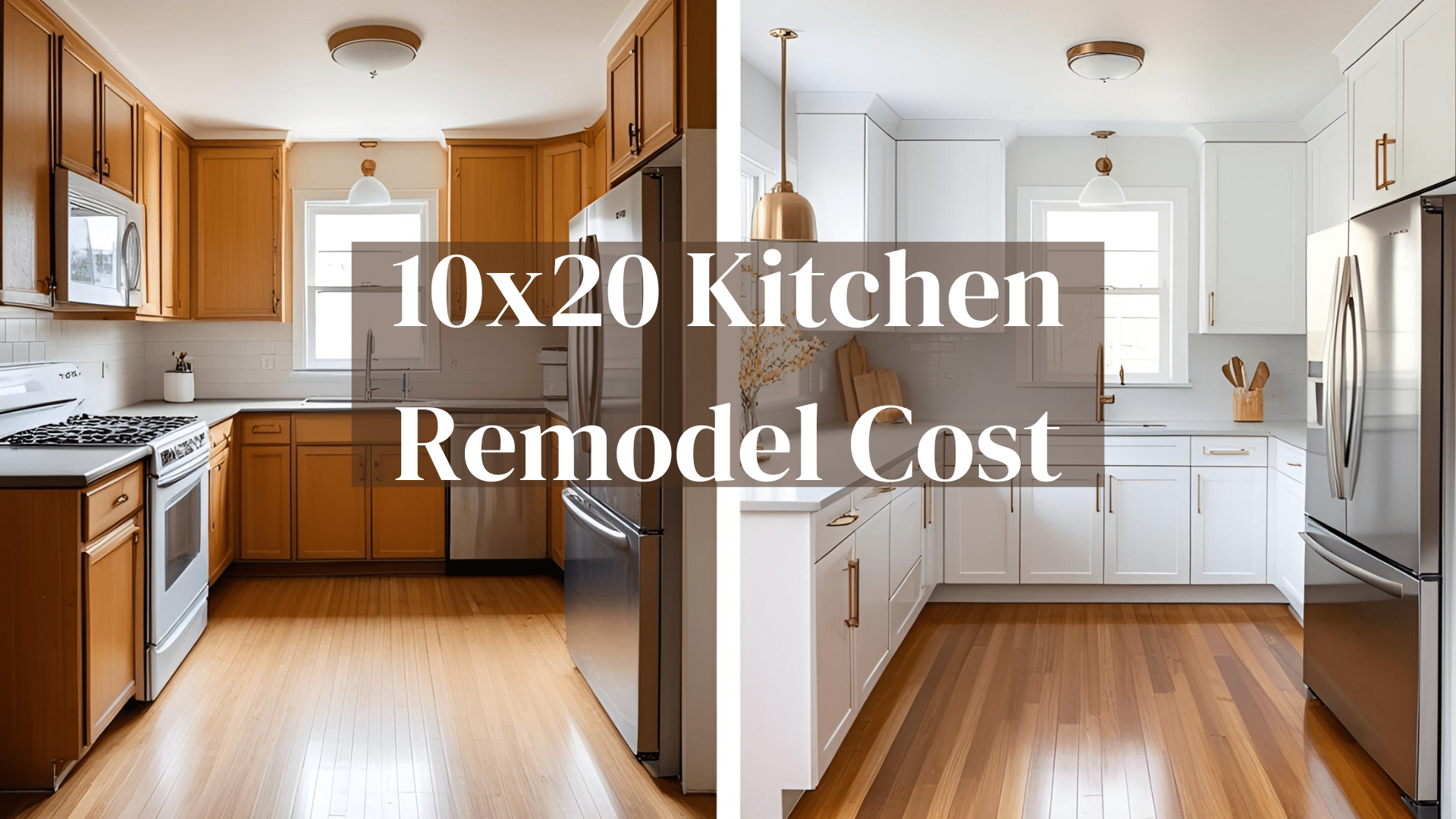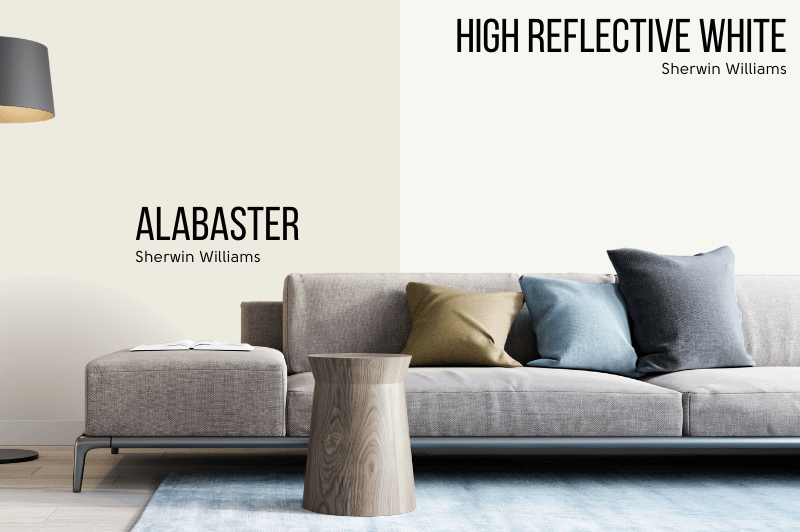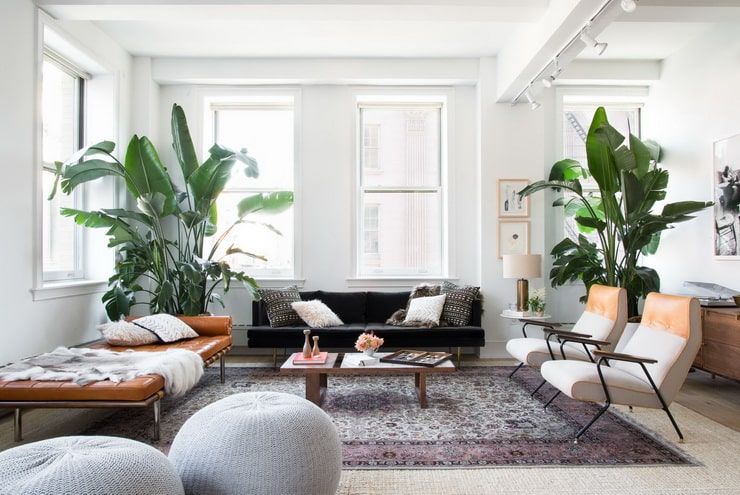What Are the Main Parts of Kitchen Cabinets?
Kitchen cabinets often feel confusing with their many parts and pieces. Not knowing what each component does can lead to costly mistakes and poor decisions when planning a remodel or repair.
We want to help you make smart choices about your kitchen storage.
Our guide breaks down each cabinet part in clear, understandable language, helping you talk confidently with contractors and make informed decisions about your kitchen project.
In this article, we’ll discuss all the essential cabinet components—from the frame to the hardware.
You’ll learn what each part does, why it matters, and how it affects your cabinet’s function and durability. We’ve organized everything you need to know in clear, simple sections.
Types of Kitchen Cabinets
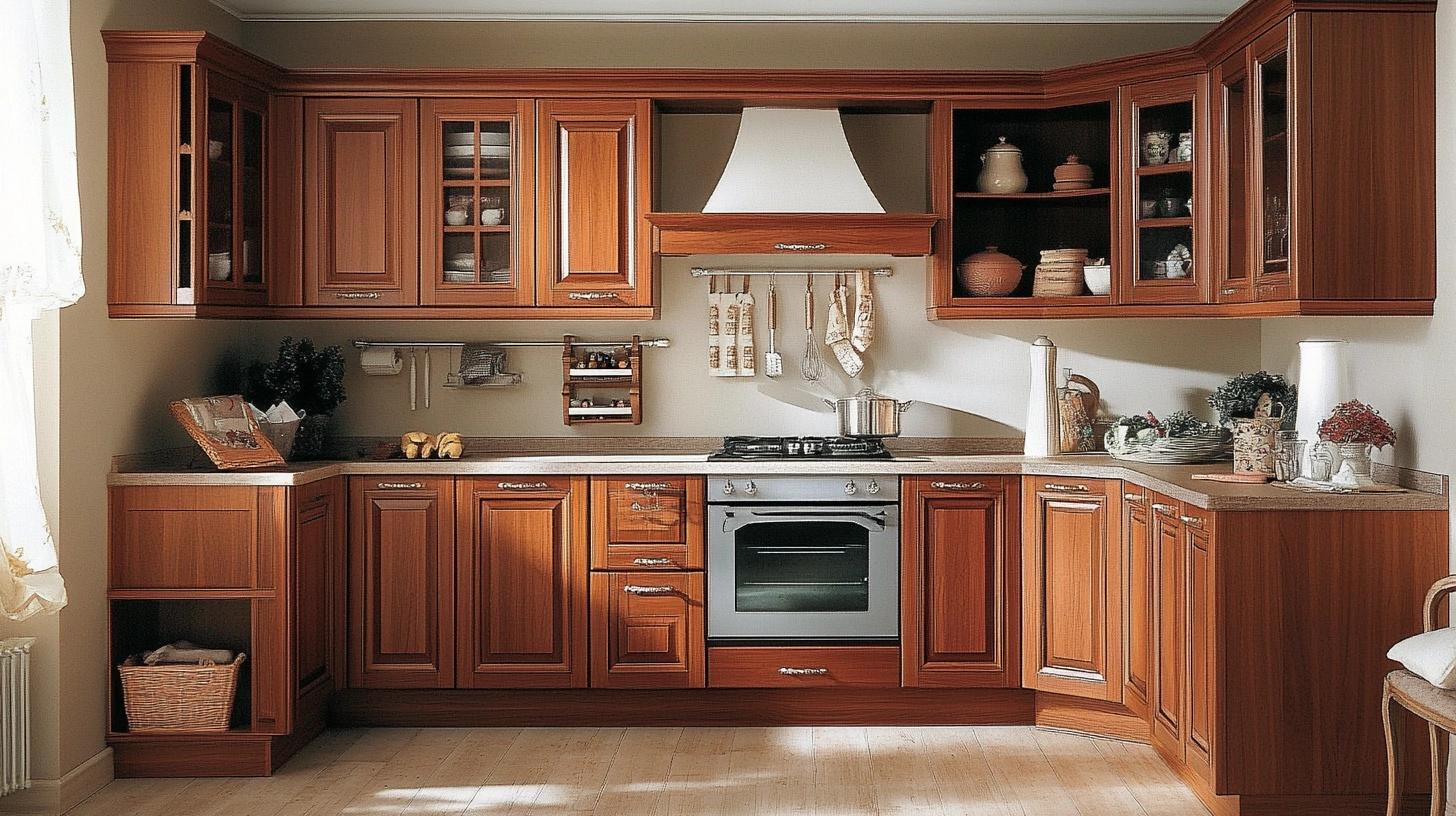
When planning your kitchen layout, you’ll encounter three types of cabinets. Each serves a specific purpose and fits in different spaces.
Let’s look at each type in detail.
Base Cabinets
These cabinets form the foundation of your kitchen storage system. They sit directly on the floor and provide strong support for your countertops.
Base cabinets are of a standard height of 34.5 inches without the countertop. With a depth of 24 inches, they offer plenty of storage space.
We find them ideal for keeping pots, pans, and other heavy kitchen items you don’t want to lift too high.
Wall Cabinets
Wall cabinets attach directly to the wall studs above your countertops. They are typically 12 inches deep, shallower than base cabinets.
The heights can vary between 30 and 42 inches, depending on your kitchen’s design and needs. We recommend using wall cabinets for storing everyday items like dishes, glasses, and dry goods.
Their placement makes items easy to grab while cooking or preparing meals.
Tall Cabinets
Tall cabinets extend from your floor toward your ceiling, usually reaching heights between 84 and 96 inches. These units work well as pantries or storage for cleaning supplies.
Many homeowners use tall cabinets to store bulk items, extra supplies, and rarely-used appliances.
Their full-height design helps you use every inch of available vertical space in your kitchen, making them a smart choice for small and large kitchens.
Cabinet Box
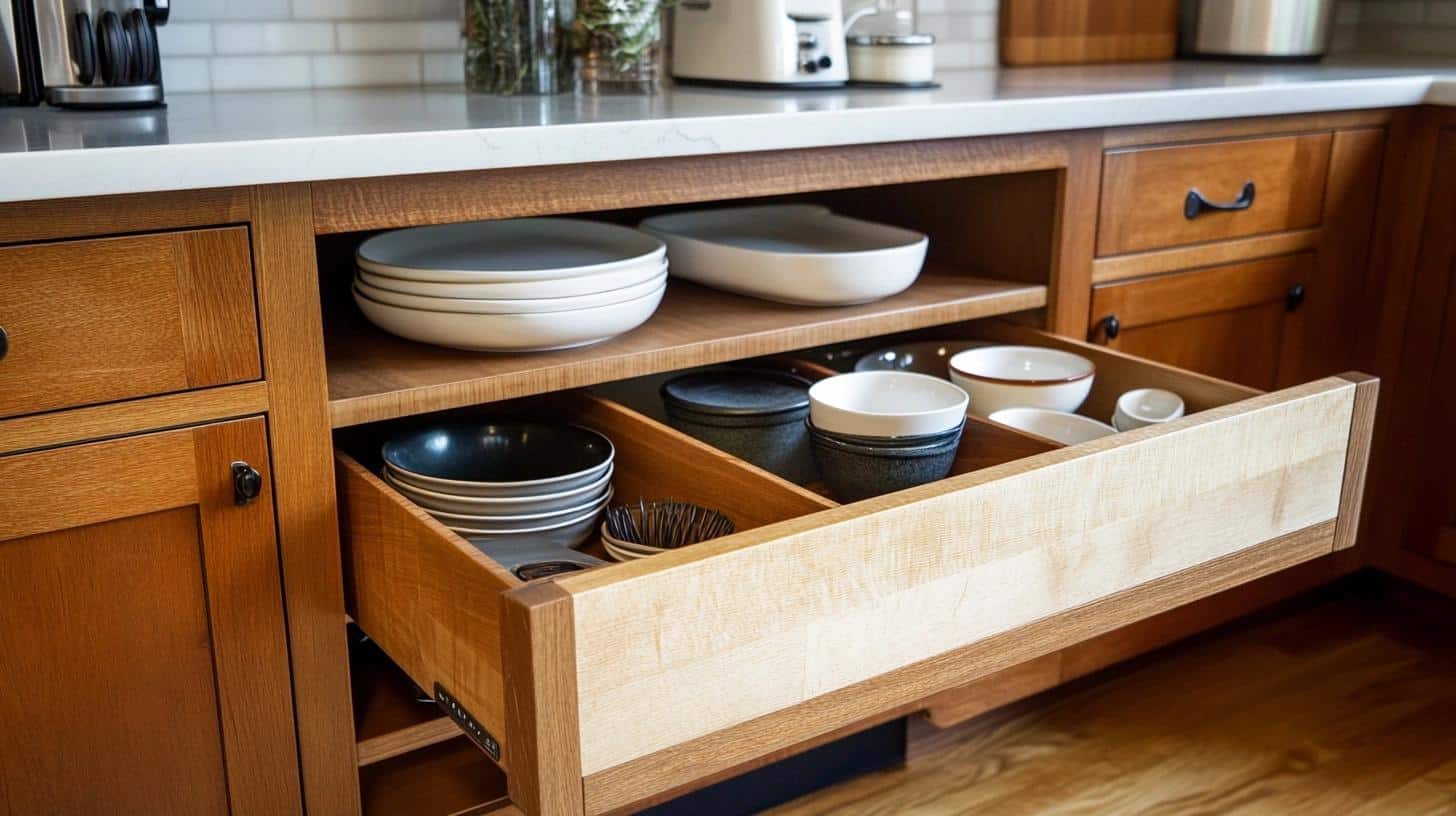
1. What is the Cabinet Box?
The cabinet box is the main structure of your kitchen storage. It is the shell that holds everything together.
It can be compared to the walls of your house—it includes the sides, bottom, and top panels that form a complete unit.
These pieces work together to create a sturdy frame that supports your shelves, drawers, and stored items.
2. Material Options for the Cabinet Box
The material you choose for your cabinet box affects its durability and cost. Here are the common options we see in kitchens today:
MDF (Medium Density Fiberboard)
MDF offers a smooth, consistent surface at a budget-friendly price. It’s made from compressed wood fibers and resin, creating a stable material that doesn’t warp easily.
We often recommend MDF for painted cabinets because it takes paint well and resists changes from temperature shifts.
Plywood
Plywood brings together strength and value. It’s made from layers of wood veneer pressed together, making it resistant to water damage.
Plywood cabinets last longer in busy kitchens because they handle weight well and stay strong even in humid conditions.
Solid Wood
Solid wood gives you natural beauty and long-term strength. Each piece shows unique grain patterns, adding character to your kitchen.
While it costs more than other options, solid wood cabinets last for generations when properly cared for.
Cabinet Hardware
1. Handles and Knobs
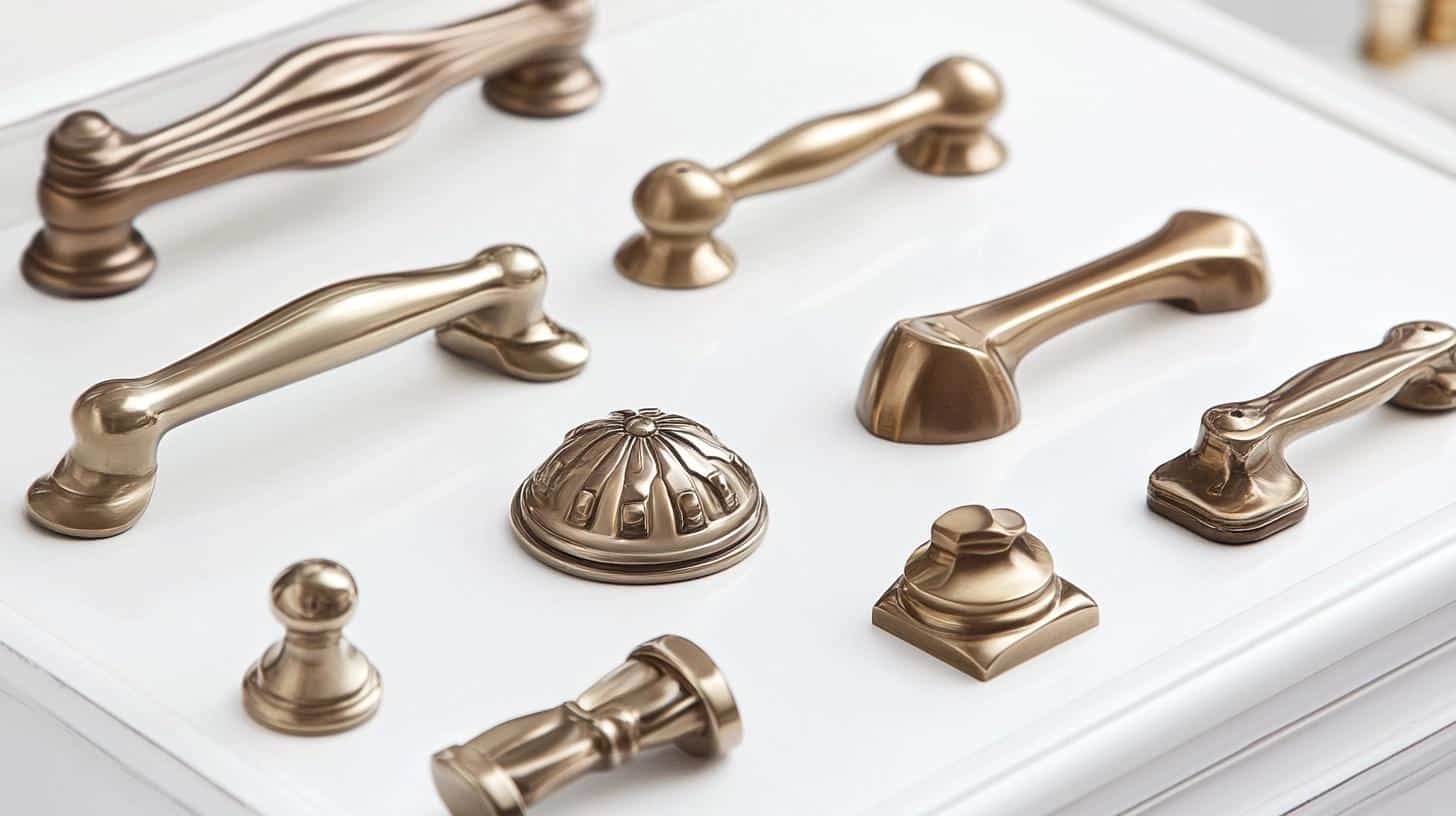
When selecting handles and knobs, we look beyond basic functionality. These pieces add style while making your cabinets simple to open and close.
They’re like jewelry for your kitchen – small details that make a big impact.
Different Materials and Finishes:
We see plenty of options in today’s market.
- Stainless steel brings a modern look and stays clean with minimal care.
- Bronze offers a warm, traditional feel that works well in classic kitchens.
- Brass has made a comeback, adding warmth to any style kitchen.
- Glass knobs catch the light and add sparkle, while matte black hardware creates a bold contrast.
Each material needs different care – some show fingerprints more than others, while some develop a natural patina over time.
2. Hinges and Drawer Slides
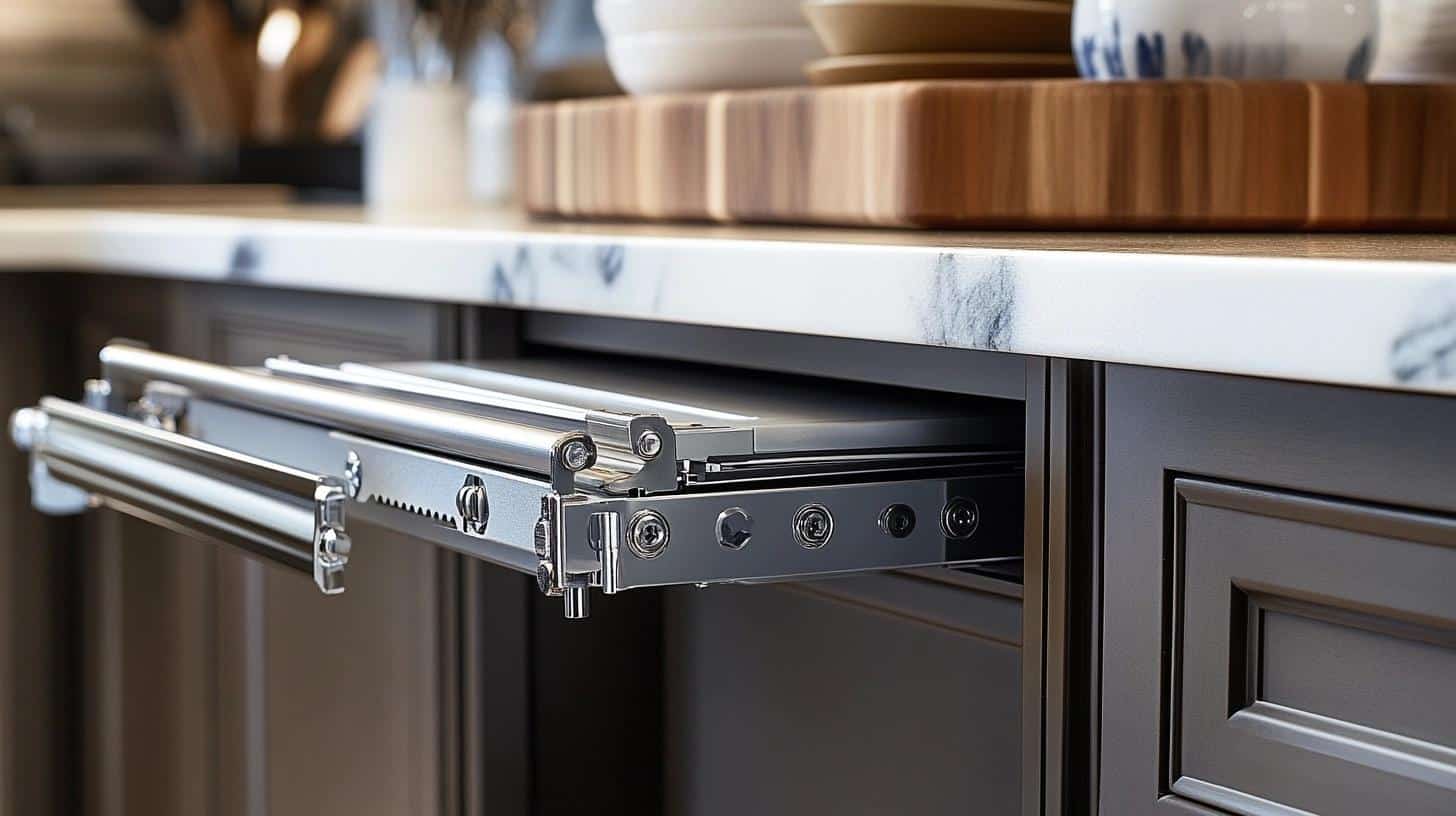
Let’s talk about your cabinets’ hidden heroes.
Standard hinges do the basic job—they open and close your doors. But soft-close hinges add an extra touch. They catch the door before it slams, guiding it closed quietly and smoothly.
Standard drawer slides work fine but can be noisy. If pushed too hard, they might also close with a bang. Soft-close drawer slides, though, make a real difference in daily use.
They prevent drawers from slamming shut and closing fully every time. They’re worth considering, especially in homes with small children or for anyone who wants their kitchen to feel more refined.
Both options have their place:
Standard Hardware:
- Costs less upfront
- Works reliably with proper care
- Simpler to repair or replace
- Feels familiar to most users
Soft-close Hardware:
- Reduces noise in the kitchen
- Prevents cabinet damage from slamming
- Adds value to your kitchen
- Lasts longer due to reduced impact
Cabinet Shelves
Adjustable vs. Fixed Shelves
| Feature | Adjustable Shelves | Fixed Shelves |
|---|---|---|
| Flexibility | Can be moved to different heights as needed | Permanently attached, non-movable |
| Customization | Allows for better customization of storage space | Limited to one configuration |
| Cost | Typically more expensive due to additional hardware | Generally cheaper due to simpler construction |
| Stability | May be less stable under heavy loads | More stable and sturdy |
| Installation Complexity | More complex, may require extra hardware | Simple to install |
| Ideal Use | Great for storing items of varying sizes | Best for heavy or frequently used items |
| Durability | Can wear over time with frequent adjustments | More durable due to fixed positioning |
How to Maximize Storage with Cabinet Shelves
We’ve learned some helpful tricks to get more from cabinet shelves. First, consider adding extra shelves where you store smaller items like spices or canned goods.
This uses vertical space better than having few, widely spaced shelves. Try shelf risers for plates and bowls—they create levels within levels.
For corner cabinets, we suggest lazy Susan systems that spin, making back corners easy to reach.
Some smart shelf tips we use:
- Keep everyday items at eye level
- Store heavy things on lower shelves
- Use clear containers to spot items quickly
- Leave breathing room above items for easy grabbing
- Group similar items together on the same shelf
Cabinet Molding and Trim
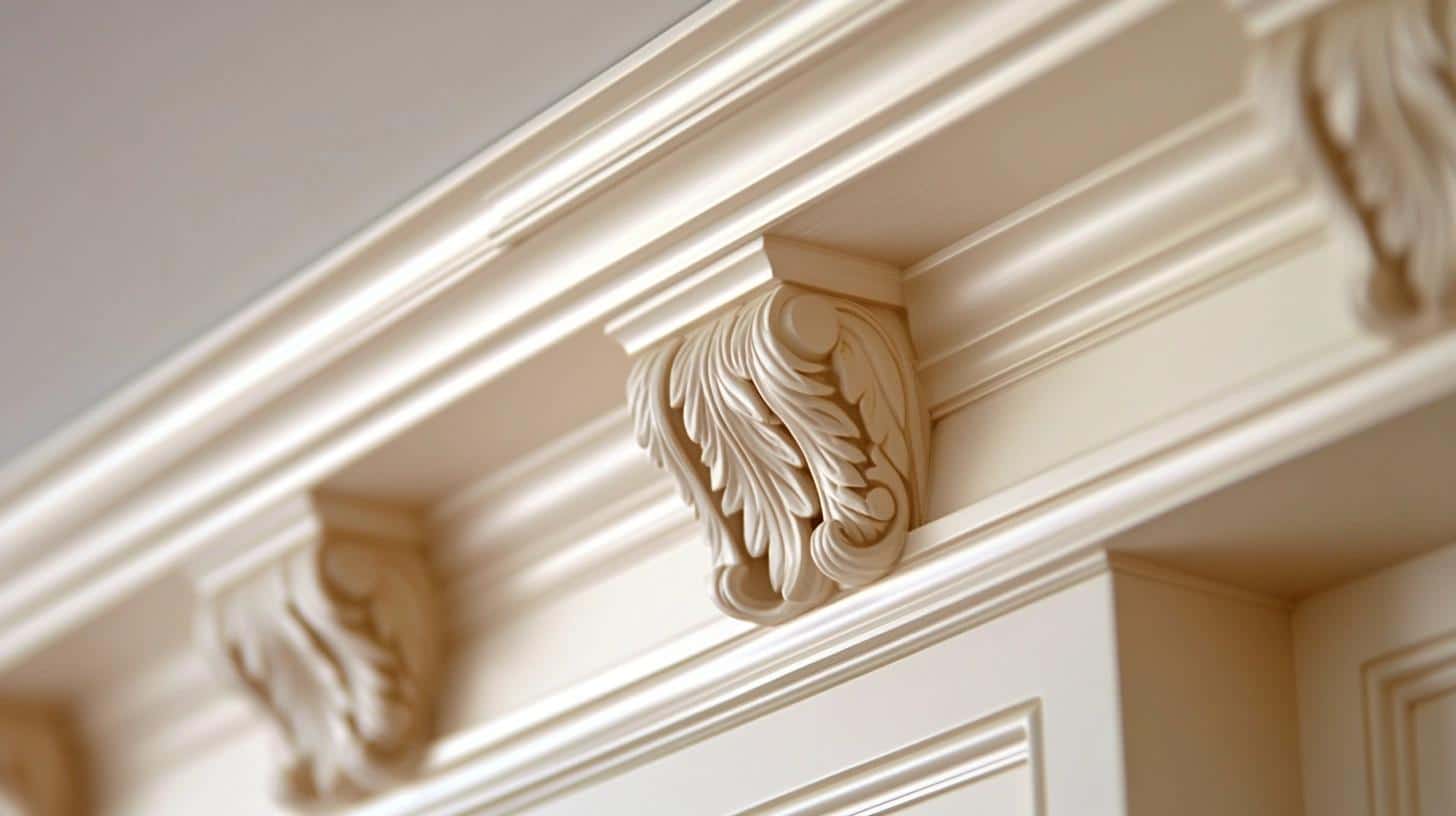
1. Crown Molding
Crown molding covers the tops of wall cabinets, filling the space between cabinets and ceiling. It is the perfect way to finish your kitchen’s look.
This trim hides gaps and creates clean lines throughout your space. It comes in various styles, from simple to detailed patterns, letting you match your kitchen’s overall design.
2. Light Rail Molding
Light rail molding fits under wall cabinets, hiding under-cabinet lighting fixtures. We find this trim essential when using cabinet lighting.
It prevents glare from the lights while you’re working at the counter, and it adds a finished touch to the bottom edge of wall cabinets.
3. Base Molding
Base molding connects your toe kick to the cabinet box. This small strip of trim makes your cabinets look built-in and polished.
We often match it to the toe kick color for a smooth look. It also helps protect the bottom of your cabinets from minor bumps and scrapes.
Cabinet Back Panel
The back panel works harder than you might think. It keeps your cabinet box square and strong. We rely on it to prevent items from falling behind cabinets and to protect your wall from moisture.
It also helps mount wall cabinets securely to wall studs.
We typically see three main options for back panels:
- Plywood: Offers strength and moisture resistance. It costs more but lasts longer and adds structural support.
- MDF: Provides a smooth surface at a lower price. It works well in dry areas but needs care around moisture.
- Hardboard: A budget-friendly choice that’s thin but sturdy. We often find it in ready-to-assemble cabinets.
Cabinet Toe Kick
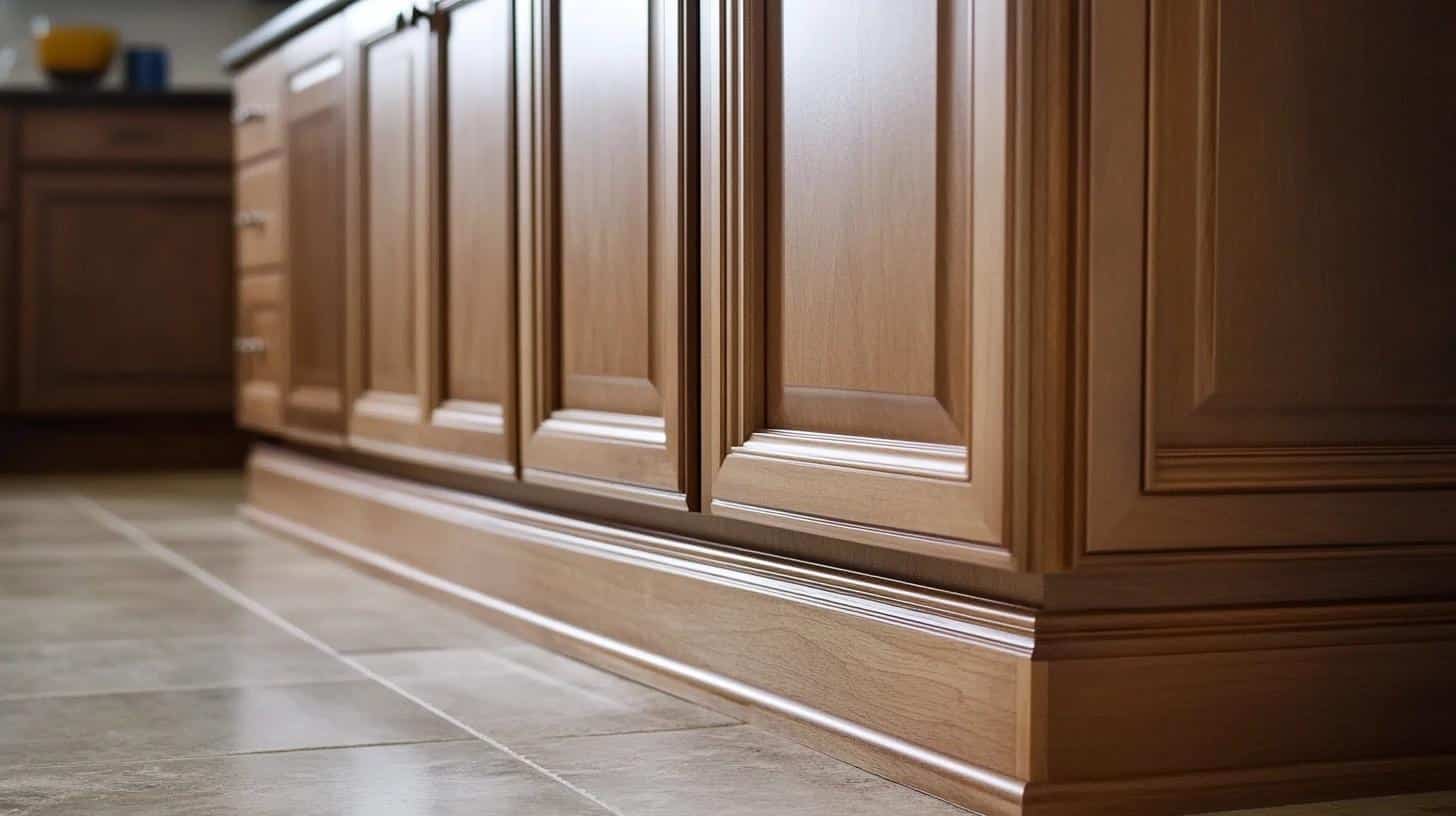
What is a Toe Kick?
Tiny details make a big difference in kitchen comfort. A toe kick is that small, set-back area at the bottom of your base cabinets.
Picture a space about 3 inches tall and 4 inches deep—that’s your toe kick. While it might seem minor, this little nook is key to making your kitchen more user-friendly.
Importance of Toe Kicks for Comfort and Functionality
With a toe kick, standing at your counter becomes much more pleasant. You’d need to stand a few inches from your work surface without it.
We’ve found that this simple cutout lets you get closer to the counter, which means less reaching and better posture while you cook or clean.
The toe kick serves other smart purposes too:
- Keeps your toes from hitting cabinet doors
- Makes cleaning the floor easier
- Stops water from splashing directly onto cabinet faces
- Helps spread your weight more comfortably when standing
- Works as a spot for bonus storage drawers in some designs
Custom vs. Pre-Made Cabinets: Which is the Best Option?
| Aspect | Custom Cabinets | Pre-Made Cabinets |
|---|---|---|
| Personalization | Fully customizable in size, style, and features to fit any kitchen layout | Limited styles and sizes; offers fewer customization options |
| Quality | Typically higher-quality materials and craftsmanship | Varies in quality; usually less durable materials |
| Cost | Generally more expensive due to tailored design and materials | More affordable; mass-produced for lower costs |
| Time to Install | Longer wait time due to custom design and build process | Ready for immediate purchase and quicker installation |
| Space Optimization | Maximizes use of available space, ideal for unique or small kitchens | Standard sizes may leave unused space in odd-shaped kitchens |
| Durability | Often more durable with reinforced materials and finishes | Durability varies; may require replacement sooner |
| Resale Value | Increases home value due to higher quality and custom fit | Less impact on resale; can be seen as less premium |
| Ideal For | Those with specific design needs and a flexible budget | Those looking for quick, budget-friendly solutions |
Tips to Preserve Cabinet Look and Function Over Time
1. Regular Dusting and Cleaning
A simple cleaning routine greatly affects how your cabinets look and last. We suggest wiping down cabinet surfaces weekly with a soft, dry cloth.
Use a mild soap solution for sticky spots or grease and dry the area immediately. Don’t forget handles and edges where finger oils can build up over time.
Quick, regular cleaning prevents tough build-up that might need harsh scrubbing later.
2. Avoid Excess Moisture
Water and cabinets don’t mix well. Using your kitchen hood while cooking stops steam from settling on cabinet surfaces. Turn it on before you start cooking, and leave it running for a few minutes after you finish.
Immediately grab a dry cloth if you spot any spills or splashes on your cabinets. Even small water spots can leave marks or cause swelling if left too long.
3. Protect from Heat and Sun
Your cabinets need protection from heat and sun. Too much sunlight through kitchen windows can cause them to fade or warp.
Open blinds or curtains to block strong sun, especially during peak hours. Keep some space between cabinets and heat-making appliances.
Even a small gap helps prevent heat damage that could warp your cabinet doors or weaken joints.
4. Polish and Seal Regularly
Think of polishing and sealing as giving your cabinets a spa day. Wood cabinets need polish every six months to keep their shine and protect the surface.
Choose a polish made for your cabinet type – different woods need different care. For extra protection, add a coat of sealant once a year. This creates a barrier against daily wear and kitchen messes.
Summing It Up
Your kitchen cabinets do more than store items—every part makes your kitchen work better. From the sturdy cabinet box to the practical toe kick, each component adds value to your daily kitchen use.
Now that you know the main cabinet parts, you can make smarter choices for your kitchen project. Remember to match your cabinet choices with how you use your kitchen.
Think about the doors you often open, the shelves you reach for daily, and the storage space you need.
Want to keep your cabinets looking good? Start with our care tips today. A little attention now will ensure that your cabinets will serve you well for years to come.

